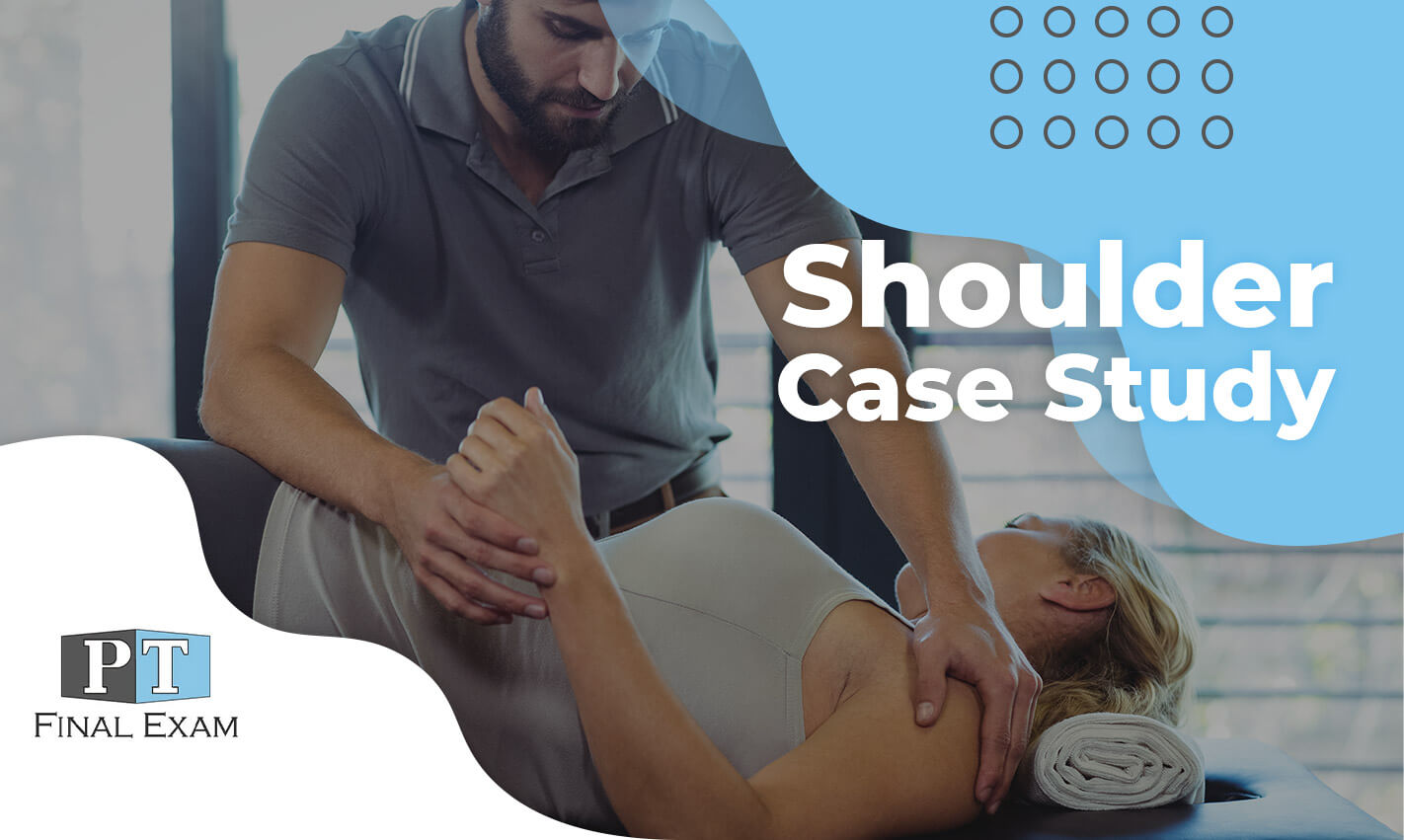I’ve been trying compile more and more videos and pictures of real life scenarios that I run into on a daily basis. Basically, I want you to be ready for clinical based scenarios on the NPTE.
My current understanding is that there are no videos on the NPTE, but there are frequently pictures that describe and demonstrate a series of questions.
In order to help you prepare for this, I shot this brief video of a patient with bilateral shoulder pain and noticed a few things. Check it out:
Follow Up Questions
This video was shot during active range of motion (AROM) testing. Here are a few questions that you need to be able to answer:
• How would you document what you saw, especially on the right shoulder?
• He complains of severe bilateral shoulder pain, especially on the right. He was a mixed martial arts instructor for many years. What would you expect about PROM testing?
• What special tests would you watch for? Would the painful arc sign be positive?
• In isolated winging, what nerve would be at fault (assuming neurological symptoms)?
• Intervention: What would be your initial intervention?
• What would be the home exercise program?
These are just a few of the possible open-ended questions that you could ask concerning this man’s case.
The key for the NPTE is being able to reason through an examination, evaluation, diagnosis, and intervention without having to rely on the multiple choices provided during the exam.
In this case, I didn’t give you a lot of details. I want you to be able to justify your answer based on key signs that you could see during the shoulder examination.
What would you do?
If you don’t know where to begin, dust off Magee and Kisner & Colby and get some answers about subacromial impingement and scapular instability. You should probably also review what you would do if the serratus anterior, rhomboids, and rotator cuff were all weak and dysfunctional.
You should also practice what you would say to this patient. A bad example would be:
“Your shoulder is messed up. Um…we need to fix it.”
A better example would be:
“It appears that your shoulder blade is not as stable as it needs to be. This could be a source of your symptoms that you get when you’re raising your arm overhead. We will start off with some simple shoulder blade strengthening exercises and begin trying to create a stable base for your shoulder joint. This will probably help you have less pain, especially when lifting your arm overhead.”
What would you say?
I have found that so many students know what different diagnoses look like in a textbook, but have never practiced saying it to a patient in layman’s terms. How would you measure up?
The NPTE is a clinical based test. They give you real-life scenarios and expect you to be able to make decisions based on the information given to you in a picture or perhaps a few paragraphs. You need to look for the key points in these questions.
Bottom line—look for what’s wrong and then try to fix it. But make sure you know what’s actually going on so that you could explain it to your patient.


5 thoughts on “Shoulder Case Study”
Right arm has restriction in flexion. Long thoracic nerve may be involved in winging of scapula which is due to serratus anterior muscle weakness. PROM could be full. Home exercises includes pendular exercises, stick exercises, exercising with weights to improve muscle power.
Thanks Will! As I told you in my email I have been away for 20 yrs so it’s really helpful for me seeing actual patients presenting with problems in the clinical setting.
1. Medial winging of the (R) scapula; LOM of (B) shoulder flexion approx. 0-120 degrees; looks like there was some type of muscle spasm at the (R) lats upon flexion
2. PROM of (B) shoulders I would expect may be limited secondary to mm tightness; I’d also test for cervical range of motion
3. Special tests i’d perform would be for differential Dx would be ULTT for any neuromuscular problems, neers impingement test for supraspinatus impingement, empty can for RCT, Obrien’s test for labral tears; painful may or may not be positive maybe depending on which special tests were positive?
4. Since I saw some type of medial winging on the (R), a possible nerve at fault could be the long thoracic nerve which innervates the SA
5. Initial intervention would be to modulate pain and start regaining full ROM; maybe some reciprocal inhibition of the scapular retractors , scapular stability and mobility exercises, a little joint mobilization of the AC joint; and some light dynamic reversals of the lats?
6. Home exercise programs I would prescribe would be:
– Self stretching of the shoulder in all planes of motion using stick
– wall pushups c a plus for the SA; seated pushups
– isometric exercise of the rotator cuff muscles and shoulder in all planes against a wall or at a door opening, then progressing to some dumbbells or theratubes;
– patient education on proper shoulder mechanics and prevention of shoulder impingement; avoid exacerbating movements
Long thoracic nerve impairment, winged scalpulae, tight upper trapezius, weak rhombhoideus, serratus anterior ( that’ all about right side).
Interventions: First release Upper trapezius – soft tissue, plus passive strech.
Then CKC – in the quadruplex, scapular stabilization ( bilateral) to get back into synergy and voluntary muscle control (do retracted – protracted movements, watch for the lumbar neutral position). Later stages – localize toward serratus anterior with wall push ups, progress in to thera- band OKC, work on rhomboids retraction in supine with the dumbells or bands, then in standing by the wall with the ball in front of the chest – work on prorioreception and muscle balance.
Just an example, many variations are possible if you use knowlege and imagination.
1. Document that the patient demonstrates with a abducted right scapula with overhead motions.
2. PROM of both shoulders to determine if there are capsular restrictions. If so, joint mobs to the GH joint in posterior glide to promote shoulder flexion. If full in PROM–then MMT delts, supraspinatus, upper traps, and etc. If muscles are weak then strengthen
3. Initial exercise: reduction of pain, regain full ROM, stretch pectoral muscles, education on posture and mechanics for prevention of pain in the shoulder. Strengthen: serratus ant in standing with wall push-ups plus; rhomboids and mid trap: pt in prone and have pt pinch scapulas together; lower trap:CKC shoulder girdle depression: upper traps-shoulder shrugs
Comments are closed.